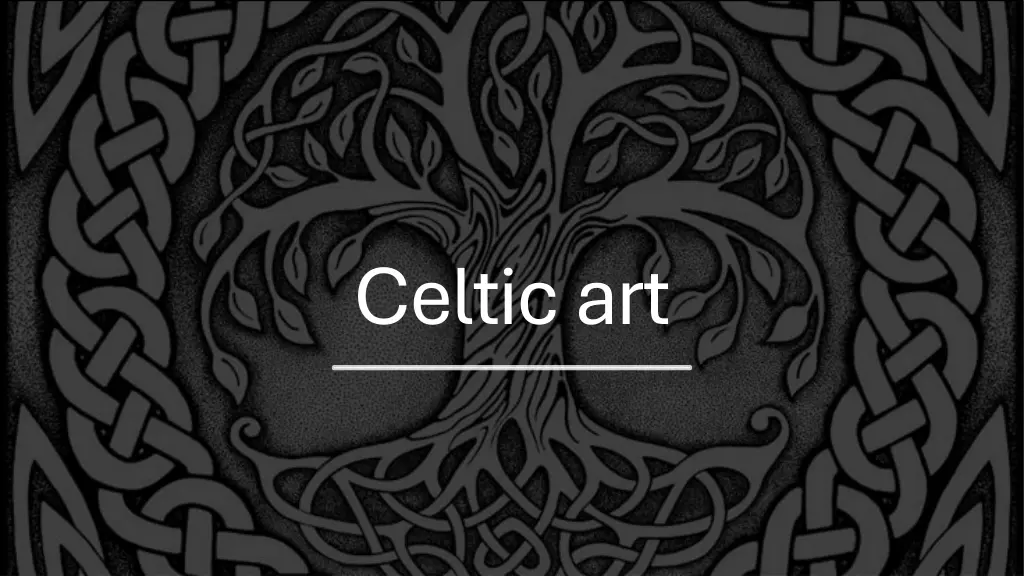
The Rich History and Beauty of Celtic Art
Explore the ornamental and symbolic world of Celtic art, associated with the Celts and ancient peoples with cultural connections. Discover the evolution from ancient manuscript illumination to the modern Celtic Renaissance.
Download Presentation

Please find below an Image/Link to download the presentation.
The content on the website is provided AS IS for your information and personal use only. It may not be sold, licensed, or shared on other websites without obtaining consent from the author. If you encounter any issues during the download, it is possible that the publisher has removed the file from their server.
You are allowed to download the files provided on this website for personal or commercial use, subject to the condition that they are used lawfully. All files are the property of their respective owners.
The content on the website is provided AS IS for your information and personal use only. It may not be sold, licensed, or shared on other websites without obtaining consent from the author.
E N D
Presentation Transcript
Celtic art is associated with the peoples known as Celts; those who spoke the Celtic languages in Europe from pre-history through to the modern period, as well as the art of ancient peoples whose language is uncertain, but have cultural and stylistic similarities with speakers of Celtic languages.
Typically, Celtic art is ornamental, avoiding straight lines and only occasionally using symmetry, without the imitation of nature central to the classical tradition, often involving complex symbolism.
In the 7th and 9th centuries Irish Celtic missionaries travelled to Northumbria in Britain and brought with them the Irish tradition of manuscript illumination, which came into contact with Anglo- Saxon metalworking knowledge and motifs.
In the 9th and 11th century plain silver became a popular medium in Anglo-Saxon England, probably because of the increased amount in circulation due to Viking trading and raiding, and it was during this time a number of magnificent silver penannular brooches were created in Ireland.
By the 1980s a new Celtic Revival had begun, which continues to this day. By the 1990s the number of new artists, craftsmen, designers and retailers specializing in Celtic jewelry and crafts was rapidly increasing. The Celtic Renaissance has been an international phenomenon
